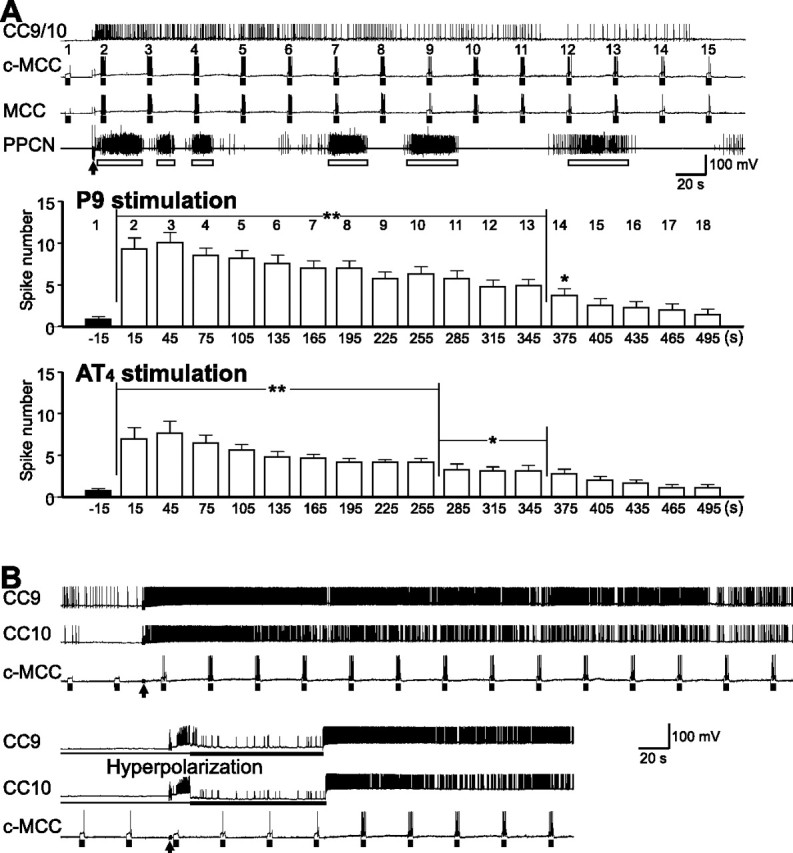Figure 9.

Brief nerve stimulation enhances MCC excitability, an effect that appears to be largely mediated by CC9/10. A, A brief stimulation of P9 (arrow) induced prolonged activity in CC9/10 that was accompanied by locomotor activity (open bars) in PPCN as well as a bilateral increase in the excitability of the MCC. MCC excitability was tested with 3 s current pulses (bars) applied every 30 s, and the numbers above the c-MCC denote test number. Bar graph at the bottom: group data showing the effects of P9 and AT4 stimulation on MCC excitability. Numbers on the top of the graph correspond to test numbers above the recordings of the c-MCC. Post hoc tests [the number of MCC spikes at each test is compared with the number of spikes at test 1 (−15 s)] with Dunnett corrections are as follows: *p < 0.05; **p < 0.01. Error bars indicate SEM. B, An experiment that was similar to the one shown in A but with recordings from both CC9 and CC10. Hyperpolarization of both CC9 and CC10 (bottom) largely prevented the increase in contralateral MCC excitability after P9 stimulation (arrows). When the hyperpolarization was released, CC9 and CC10 started firing and MCC excitability increased.
